The operational area of the office includes the area south of Keelung River in Taipei City, as well as Xindian District, Shenkeng District, Shiding District and Pinglin District in New Taipei City. Annual rainfall is about 1800~3000mm and annual average temperature about 20~30℃, with a subtropical island climate. The main irrigation water source under the office’s jurisdiction is the Xindian River in the Tamsui River system. Its irrigation canals include Dapinglin Canal, Guangxing Canal, Wantan Canal and Tutan Canal. These are mainly located in the jurisdiction of Xindian Workstation. As shown in Figure 1, there are two main canal irrigation water sources: weir water and water pumping. Currently, the main crops in the irrigation area are short-term leafy vegetables, bamboo shoots, flowers, and fruit trees. About 20 hectares of Guangxing Canal irrigation area lies within its jurisdiction, with the general water supply source of the irrigation area diverted from Pingguang River through Guangxing Canal weir. It flows through the main canal, lateral canal and small ditches of Guangxing Canal before reaching the irrigation area, and the water is delivered and distributed to the fields.
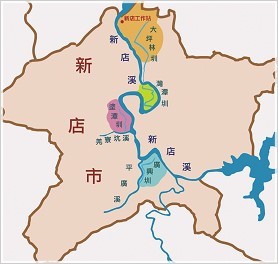
Due to heavy rainfall brought by Typhoon Soudelor on August 8-9, 2015, rainfall in the
Xindian irrigation area exceeded 610mm, causing the water level of Pingguang River to rise, which destroyed the
Guangxing Canal river weir. The flood water carried earth and rocks that were washed away and buried, causing a
severe earth and rock collapse at the water intake work on an upstream section of Pingguang River, with the
original water intake structures washed away.
Many roads collapsed as a result of the typhoon.
The main disaster-affected irrigation area under the Xindian Workstation was the Guangxing Canal irrigation area. Its irrigation channels were blocked by soil, rocks, broken trees, branches and leaves, leaving them unable to supply farmland irrigation water. An emergency repair engineering project was urgently needed. As a result, there was no water supply for irrigation in this section during the repair period and crops were not harvested. In addition, Taiwan has been affected by global climate change in recent years, with rainfall increasingly concentrated and intense And the number of consecutive days without rainfall has increased accordingly. At that time, in addition to actively carrying out emergency repairs to the Guangxing Canal irrigation area, in order to ensure stable irrigation in the future under extreme weather conditions, local backup water sources were also planned, with suitable locations selected in Guangxing irrigation area, and plans to construct farm ponds and pipelined irrigation systems. Accordingly, a plan was proposed for an irrigation plan, design and construction project.
Guangxing Canal Water Storage Farm Pond engineering project planning and design
The planned water storage farm pond area is based on the provisions of Paragraph 3, Article 8-1 of the Agricultural
Development Act and Article 7 of the Review Measures for Applications to Use Agricultural Land for Agricultural
Facilities, wherein the total area of all agricultural facilities for each agricultural facility specified in the
application, shall not exceed 40% of the agricultural land where the facilities are located, and the upper limit
area of agricultural facilities that can be applied for is approximately 1,328m2.
The land where the water storage farm pond is constructed is long and narrow, about 120m long and 25m wide. Preliminary planning of the water storage farm pond is 60m long, 20m wide and 2.9m deep, with maximum effective water storage capacity (full water depth 2.8m) of approximately 3,360m3. As the daily crop water requirement for short-term leafy vegetables is 4mm/day, Guangxing Canal irrigation area (20 hectares) can approximately supplement the irrigation area for three consecutive days without rainfall.
The plan takes the sustainability of irrigation resources in the Guangxing Canal irrigation area into account, and associated engineering projects are carried out in phases based on the planning and design principles of water storage facilities and the overall integration of farmland.
Plan execution status
The first phase of the engineering project was started on October 1, 2019. The preliminary work of the engineering project included the preparation of materials and on-site staking out, followed by trail maintenance and drainage improvement engineering projects, canal upgrades, improvement maintenance engineering work, and at the same time the construction of storage facilities for the main body of water and planting work. Ancillary facilities include stainless steel railings, labor-saving water gates, lifebuoy boxes (including lifebuoys), warning signs and water gauges etc. The surrounding plants include bananas, red plums and tankan.
The engineering project was completed on February 27, 2020, after a total construction period of 140 days. The photos of the water storage farm pond after completion are shown below.
A rolling review and evaluation of the next phase of the engineering project will be conducted based on the use of water-storage ponds and the needs of farmers, to install a pipeline irrigation system for the entire region and improve the efficiency of agricultural irrigation water, thereby taking advantage of the water saving benefits of pipeline irrigation technology.
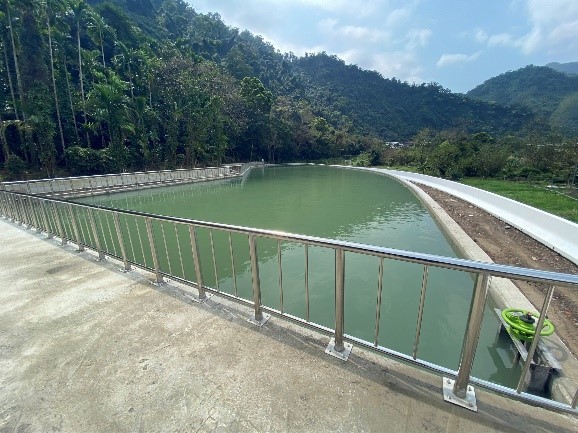
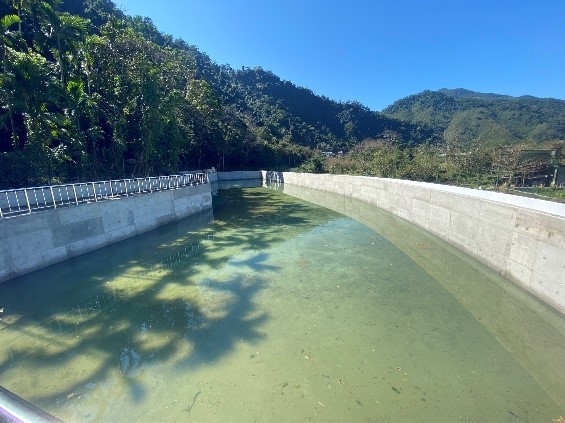
A section of a water storage farm pond
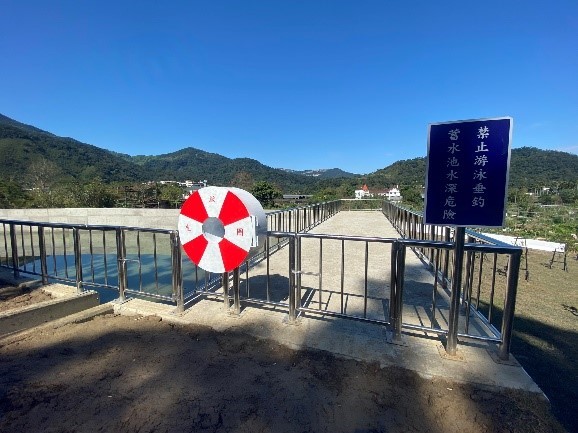
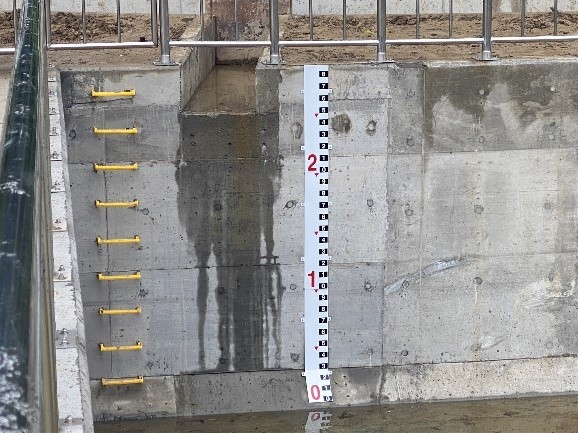
Ancillary facilities - lifebuoy, warning signs, water gauge, stainless steel steps
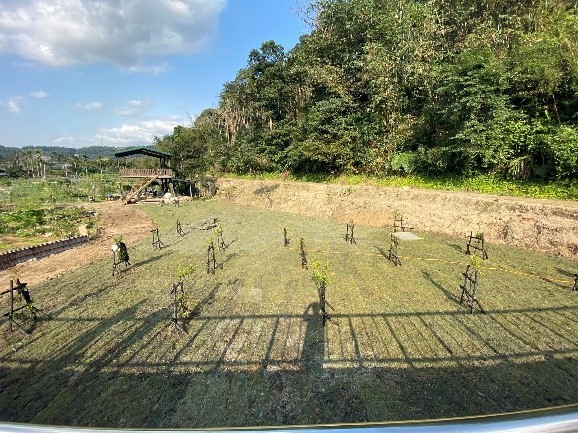
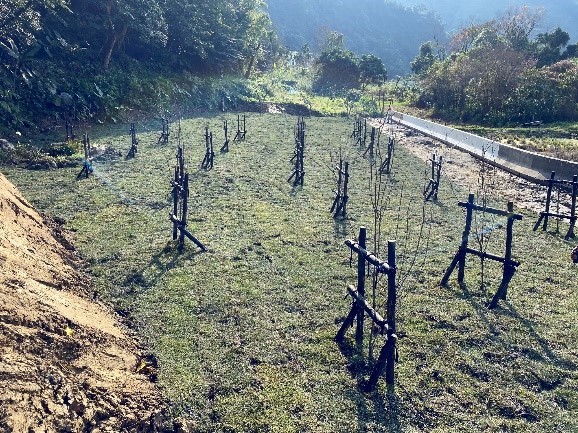
Surrounding plants
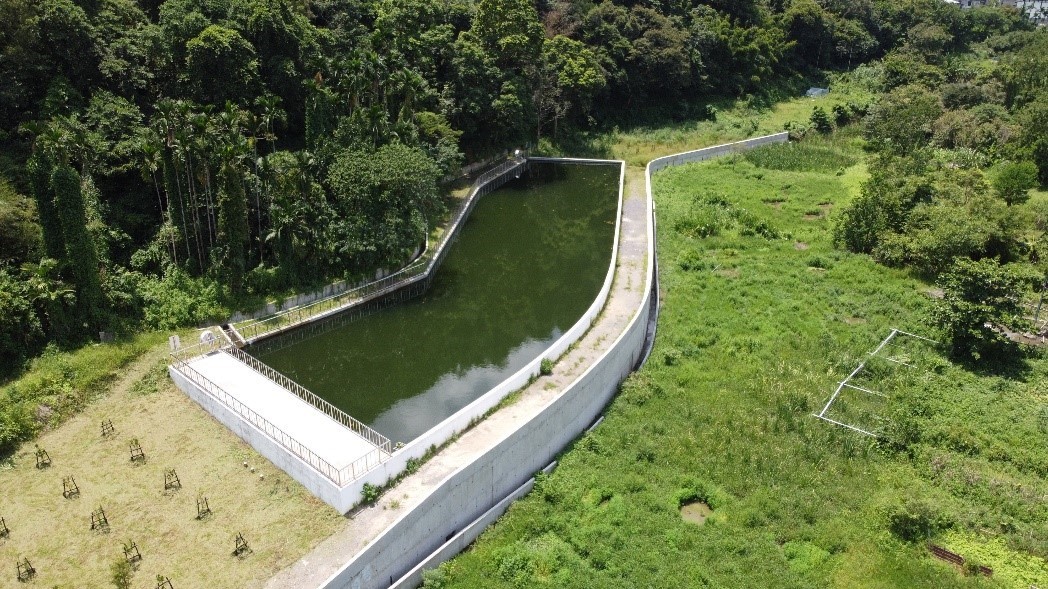
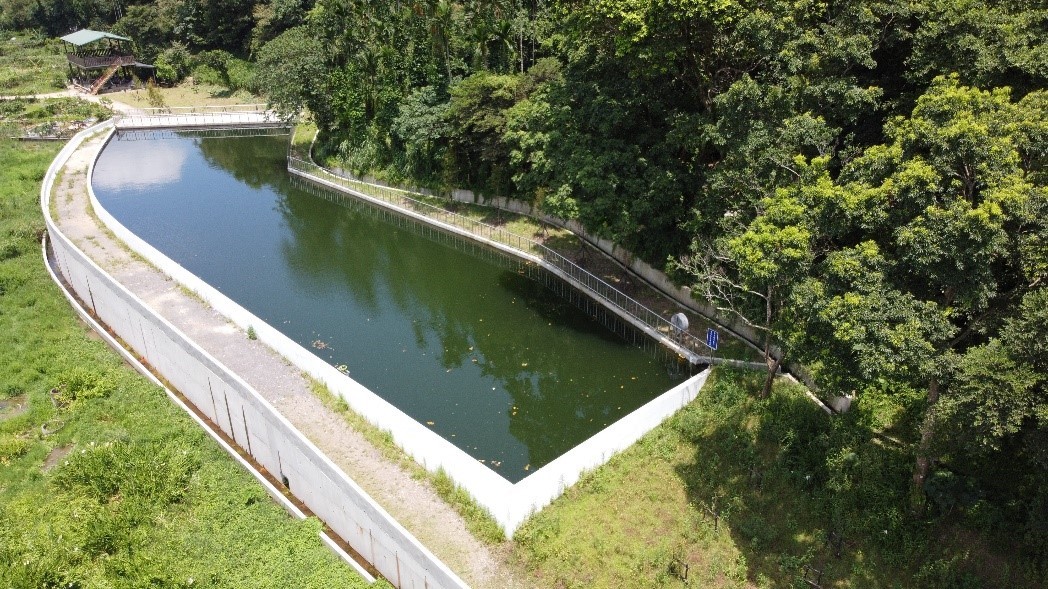
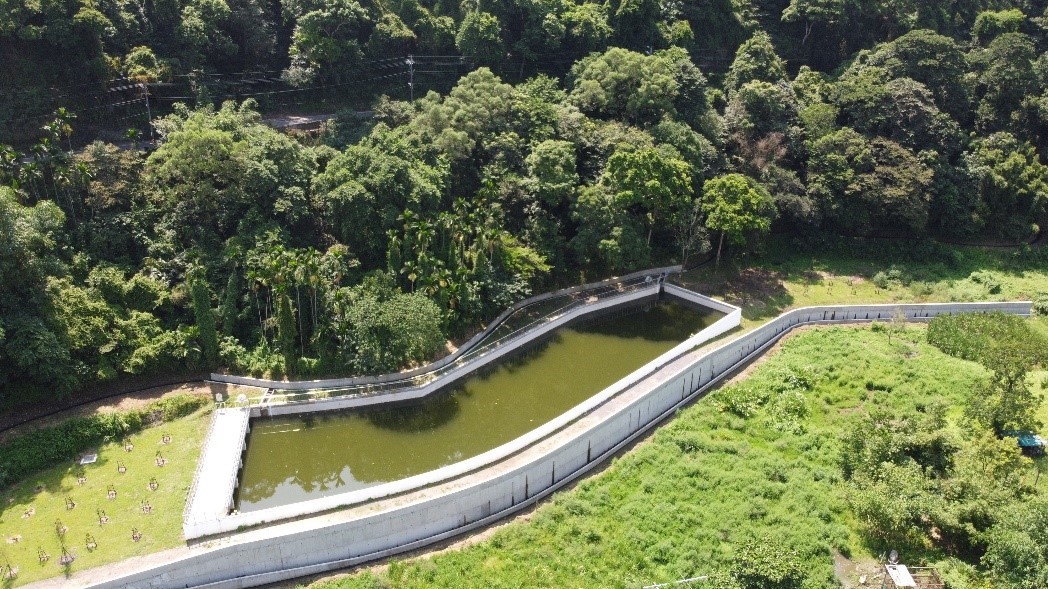
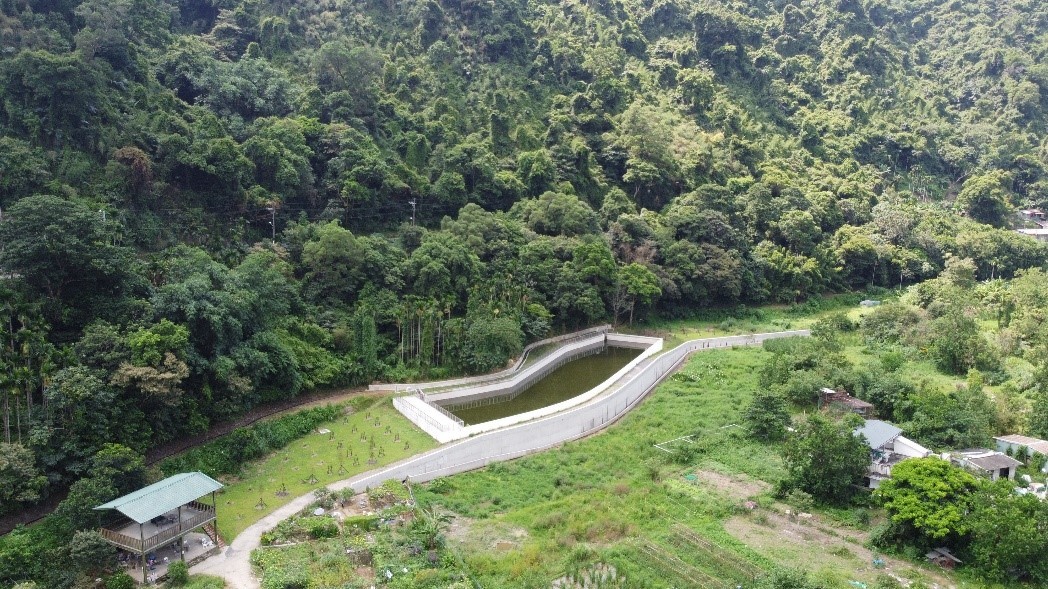
Aerial shot of a water storage farm pond
Conclusion and future prospects
Water is necessary for the survival of all living things. As a result of today's extreme climate, water shortages have become increasingly serious. In the Xindian Guangxing Canal irrigation area, water often runs out due to drought or damaged weirs and water supply is interrupted due to heavy rain, resulting in insufficient water supply. In this instable situation, farmers have no water to use.
In order to improve the production environment for farmers and protect them from the threat of extreme weather, this department works with various parties to plan and build small water storage farm ponds to store irrigation water and solve local water supply problems.
After the planning and construction of the subsequent pipeline irrigation engineering project is completed, its operation and management will mainly be based on water storage farm ponds and coordinate with the existing dry farming irrigation system to ensure the stable supply of irrigation resources in the irrigation area. This is in line with modern irrigation pipeline facilities, and saves on water, energy and costs promoted by government policy, ensuring effective operations and management that benefit farmers, and through the efficient utilization of water and soil resources, promotes the sustainable development of agriculture in the irrigation area.